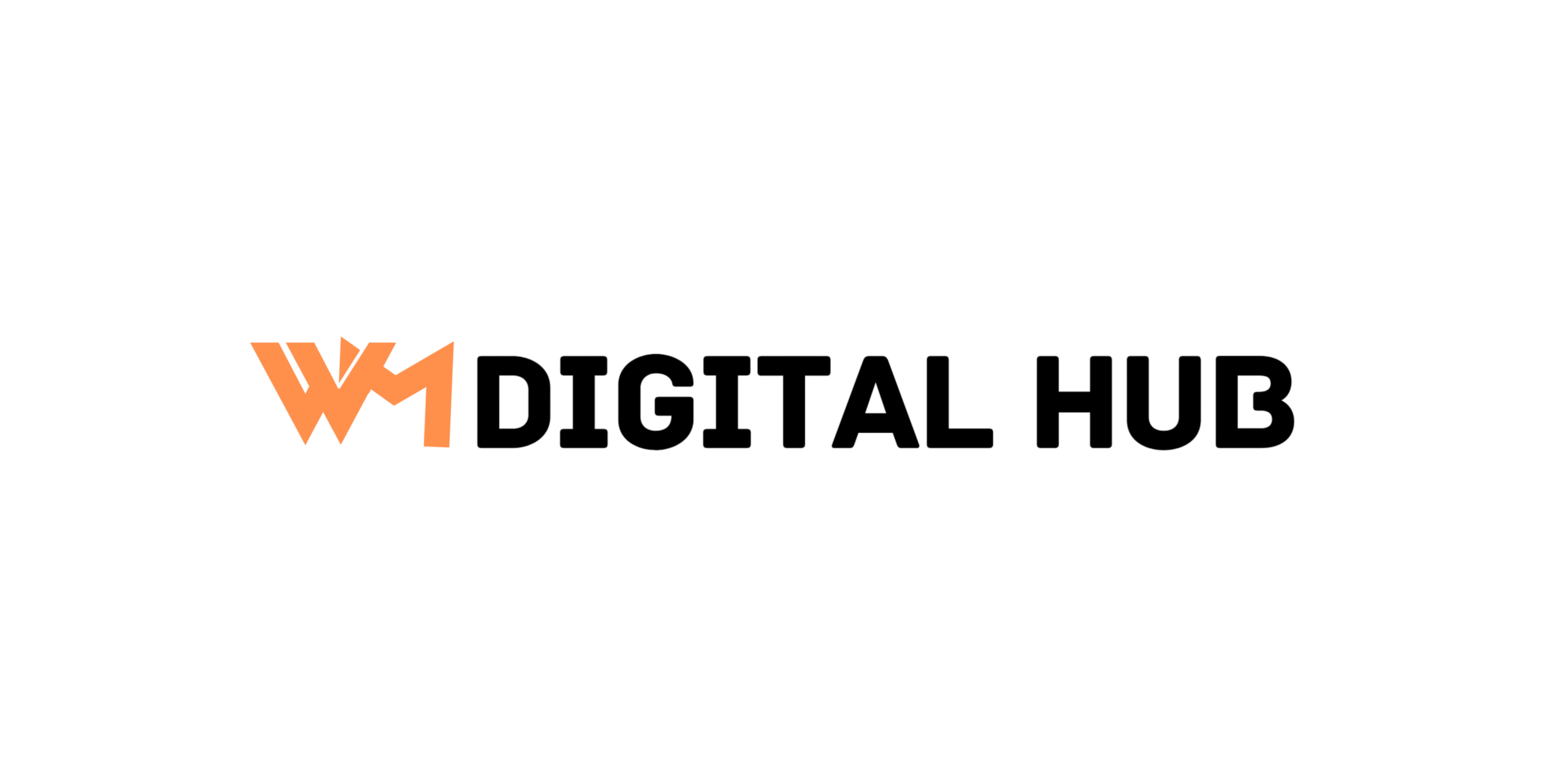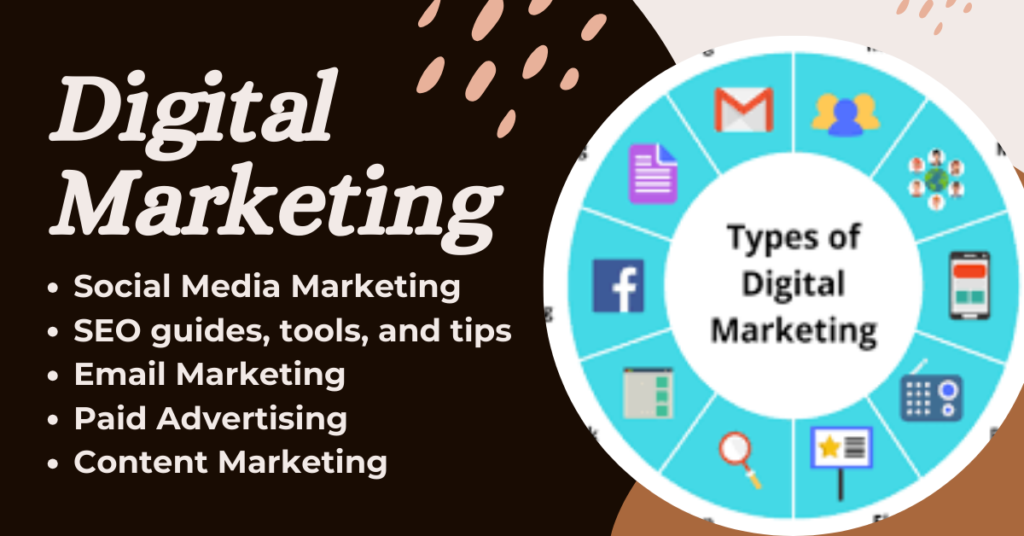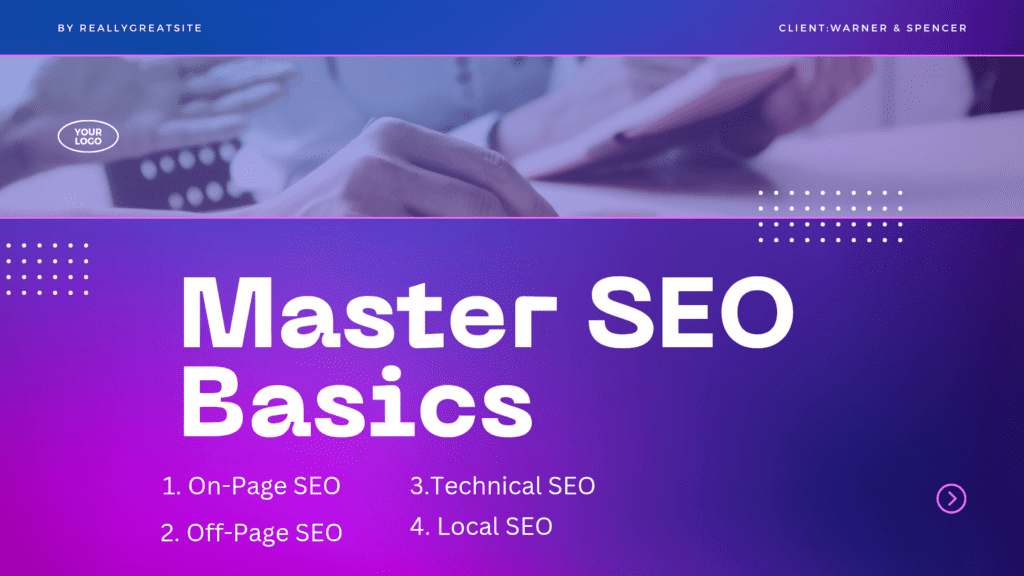Social media has become a game-changer for businesses, freelancers, and creators alike. Whether you’re looking to promote your product, expand your personal brand, or connect with potential clients, social media marketing provides endless opportunities. But, let’s be real—starting out can feel overwhelming. With so many platforms, varying types of content, and countless strategies to choose from, it’s easy to feel lost. Which platform should you focus on? What kind of content will grab your audience’s attention? And most importantly, how do you build a strategy that actually delivers results?
This guide is designed to simplify it all for you. We’ll break down social media marketing step by step, showing beginners exactly how to create a strategy that works. Whether you’re just getting started or need help fine-tuning your approach, by the end of this guide, you’ll feel confident in your ability to harness the power of social media to grow your business and reach your goals.
- Start with a Clear Purpose
Embarking on your social media marketing journey without a goal is like setting off on a road trip without a map. It might sound adventurous, but eventually, you’ll feel lost and unsure if you’re heading in the right direction. That’s why establishing a clear goal is the very first and most crucial step.
Without a goal, it’s easy to get caught up in the excitement of social media trends and post aimlessly. Instead of attracting the right audience or accomplishing something meaningful, you’ll be left wondering if your time and effort have been well spent. So, how do you figure out your goal?
The Key to Success: Start with Your ‘Why.’
The best social media strategies begin by answering one simple question: Why are you on social media? Understanding your “why” will help you stay focused and motivated, especially when results aren’t immediate.
Think about your business, brand, or personal goals:
Is your main goal to increase brand awareness?
Are you trying to get your name or your business noticed in your local community or worldwide?
Do you want people to see your product or service and immediately think of you when they need something similar?
Do you want to drive more traffic to your website or online store?
Is your goal to turn social media followers into website visitors who might make a purchase, sign up for a newsletter, or explore your offerings?
Are you focused on building a loyal, engaged community online?
Do you want your audience to interact with you regularly, share your content, or contribute their opinions in comments and direct messages?
Is generating sales or leads your top priority?
Are you using social media to push for direct conversions like sales, sign-ups, or other actions that lead to revenue?
Breaking Down Your Goal:
Let’s look at a few more examples to help you visualize how your goals can shape your approach:
Example 1: A Small Bakery Looking to Grow Locally
You’re running a small bakery, and you want to boost local awareness for your brand. Your goal could be to attract customers from your city or neighborhood. Social media platforms like Facebook and Instagram would be perfect for showcasing your most visually appealing cakes and pastries, while local hashtags and promotions (like “Get 10% off your first order when you mention this post”) would encourage immediate action. Posting regular updates about new flavors or seasonal discounts would help maintain interest and keep your bakery at the forefront of your local audience’s mind.
Example 2: A Fitness Trainer Targeting Online Clients
You’re a fitness coach who wants to expand your online presence. Your goal could be to build an online community and offer virtual training sessions to clients across the globe. Your strategy would include content like fitness challenges, workout tips, healthy eating ideas, and client success stories on platforms like Instagram and YouTube. The idea is to create a space where followers feel motivated and connected, eventually converting them into paying clients.
Example 3: An Artist Looking to Sell Artwork Online
Let’s say you’re a freelance artist and your primary goal is to generate sales. You might focus on creating compelling Pinterest boards and Instagram posts showcasing your artwork and providing easy links to buy directly from your online store. The more content you share (e.g., behind-the-scenes studio videos or the creative process), the more your audience feels connected to your work—and more likely to make a purchase.
How Goals Shape Your Social Media Strategy
Once you’ve nailed down your goals, it’s time to use them to guide your social media strategy. Here’s how they’ll influence your decisions:
- Content Focus:
The type of content you create should directly align with your goals. For example, if you’re looking to increase brand awareness, your content will need to be shareable and resonate with a broad audience. If your goal is generating sales, your content should focus on showcasing your products, offering exclusive deals, and providing clear calls to action.
Example:
If your goal is to generate leads, post valuable tips, how-to guides, or client success stories that drive interest and lead people to fill out a contact form or sign up for a webinar.
If you want to build engagement, try sharing personal stories, polls, and interactive questions that invite followers to comment and get involved.
- Platform Selection:
Not all social platforms are created equal. Based on your goal, you’ll want to choose the platforms where your target audience spends the most time. You’ll get the best results by focusing your energy on the platforms that work for your niche. Here’s a quick breakdown:
Facebook & Instagram: Great for brand awareness, customer interaction, and local businesses.
LinkedIn: Ideal for B2B marketers, professionals, and building connections in industries like finance, tech, and education.
Twitter: Works well for real-time interaction, customer service, and trending topics.
Pinterest: Perfect for creators, artists, and anyone in industries where visuals are key to conversions (e.g., fashion, home decor, travel).
- Measurement and Success:
Clear goals make it easier to track your progress. You’ll want to set Key Performance Indicators (KPIs) such as:
Number of new followers
Engagement rate (likes, shares, comments)
Website traffic from social media
Conversion rate (leads, sign-ups, purchases)
These metrics will help you gauge whether your social media strategy is working or if adjustments are needed. It’s also crucial to revisit your goals regularly as your business grows or shifts.
Pro Tip:
Goal-setting isn’t a one-time activity. As your social media skills improve and your business grows, you’ll refine and evolve your goals. Reassess your goals quarterly to make sure they still align with your vision and adjust your strategies accordingly.
For example, after a few months, you might notice that your social media presence is strong and your brand awareness is up. Your new goal could be to focus on conversions, like turning your followers into paying clients.
This expanded section should provide an even more engaging and informative introduction to social media marketing for beginners. It’s practical, easy to follow, and offers real-life examples that will help your audience connect with the content.
Let me know if this meets your expectations! Once we’re done with this, we can move on to the next step in the guide.
Perfect! Let’s move to the next section and make it even more engaging, humanized, and SEO-friendly. Here’s an extended version with detailed insights:
Choose the Right Social Media Platforms for Your Business
Now that you have your goals clearly defined, the next step is to decide which social media platforms are best suited for your business. This step is crucial because not all platforms are created equal. Each social media site has its unique audience, tone, and type of content that works best. So, how do you pick the right one?
Understand Your Audience
The key to selecting the right platform is understanding where your potential customers spend their time. It’s not about being on every platform; it’s about being where your audience is. Here’s a quick guide on the most popular social media platforms and who they’re best for:
Facebook: With over 2.8 billion users, Facebook is great for businesses targeting a wide demographic. It’s ideal for community-building and sharing a mix of content, from posts to videos to events.
Instagram: Instagram is visually driven and perfect for businesses in industries like fashion, food, beauty, travel, and lifestyle. If your product or service can be showcased through eye-catching visuals, Instagram is the place to be.
LinkedIn: If you’re a B2B business or a freelancer looking to connect with other professionals, LinkedIn is the platform to focus on. It’s ideal for networking, sharing industry knowledge, and positioning yourself as an expert in your field.
Twitter: Twitter is perfect for quick updates, news, and conversations. If you have a brand with a witty or conversational tone, Twitter is a great space to engage in real-time with your audience.
Pinterest: If you run a business in a creative niche, like design, fashion, or home decor, Pinterest can drive significant traffic to your site. It’s a great platform for visually stunning content that inspires people to take action.
TikTok: TikTok has exploded in popularity, particularly among younger audiences. If your business can create fun, shareable, and creative videos, this is the platform to reach a more dynamic and engaged audience.
Tailor Your Strategy to Each Platform
Once you’ve selected the platforms that align with your audience and goals, it’s time to tailor your strategy to fit each one. For example, what works on Instagram might not work on LinkedIn. Here’s how you can adapt:
Facebook: Share a variety of content types—status updates, images, videos, and even polls or contests to engage your audience. The more interactive, the better!
Instagram: Focus on high-quality images, videos, and stories. Use Instagram’s shopping feature if you’re selling products, and don’t forget to use relevant hashtags to reach a wider audience.
LinkedIn: Share industry insights, thought leadership articles, and case studies. LinkedIn is all about building professional credibility, so be sure to post content that positions you as an expert in your field.
Twitter: Keep your tweets short and to the point. Share quick updates, industry news, or engage with trending topics. Use hashtags to join broader conversations.
Pinterest: Focus on visually appealing content such as infographics, step-by-step guides, and product shots. Use rich pins to make your posts more engaging and informative.
TikTok: Don’t be afraid to get creative! Post short, attention-grabbing videos that show the personality behind your brand. Challenge trends, show behind-the-scenes content, and engage with viral hashtags.
Focus on Quality, Not Quantity
While it’s tempting to be everywhere, it’s better to focus your energy on a few platforms and do them well. Being active on multiple platforms is important, but the key is consistency and quality. By focusing on the platforms that best serve your goals and audience, you can ensure your content is reaching the right people at the right time.
Pro Tip: Don’t Forget About Analytics!
Each platform provides analytics tools that can help you monitor how your content is performing. Take advantage of these insights to adjust your strategy and refine your approach. Are you getting more engagement on Facebook posts than Twitter? Use that info to shift your focus toward Facebook, where you’re seeing more traction.
Absolutely! Let’s continue building on the guide with the next step. We’ll keep it engaging, humanized, and SEO-friendly while expanding on the content.
Create Engaging Content That Resonates with Your Audience
Now that you’ve chosen the right platforms for your business, it’s time to focus on the heart of social media marketing—content creation. Your content is what will draw your audience in, keep them engaged, and ultimately drive results. But creating content that resonates with your audience can feel challenging, especially with so much noise online.
The secret? Quality over quantity.
It’s not about posting 10 times a day; it’s about creating valuable, relevant content that your audience will connect with. Let’s dive into the key elements of creating engaging content.
Know Your Audience’s Pain Points and Interests
To craft content that truly resonates, you need to understand your audience’s needs, desires, and struggles. The better you know them, the more effectively you can speak to them. Here’s how to uncover your audience’s pain points:
Conduct Surveys and Polls: Ask your followers directly what kind of content they would find helpful. For example, if you run a fitness coaching business, ask your followers what fitness challenges they face—time management, motivation, or nutrition.
Look at Competitors: See what your competitors are doing. What kinds of content are getting the most engagement? This can give you insights into what your target audience is already responding to.
Check Social Media Conversations: Monitor conversations happening in your industry. What are people talking about on Twitter, Instagram, or LinkedIn? What questions are they asking?
Create Value-Driven Content
When it comes to creating content, always keep your audience in mind. The goal is to offer value. Whether you’re educating, entertaining, or inspiring, your content should offer something that benefits the reader. Here are some ideas for value-driven content:
Educational Content: Share tips, how-to guides, and tutorials. People love learning new things. For example, if you’re a freelance graphic designer, create a post that teaches your audience how to use design tools like Canva or Adobe Photoshop .
Entertaining Content: Use humor, memes, or relatable content to keep your audience entertained. A fun and engaging post can go a long way in building brand loyalty.
Inspirational Content: Share success stories, customer testimonials, or motivational quotes. If you’ve helped a client achieve great results, share their story to inspire others.
Diversify Your Content Formats
Don’t just rely on one type of content. Mix things up! People engage differently depending on the format. Here are a few content formats you can experiment with:
Images: Share high-quality, eye-catching images related to your product or service. You can post product shots, behind-the-scenes images, or even infographics that simplify complex information.
Videos: Videos have a higher engagement rate than any other type of content. Whether it’s a tutorial, a behind-the-scenes look at your process, or a product demo, videos help build a stronger connection with your audience.
Stories: Use Instagram or Facebook stories to share real-time updates, promotions, or behind-the-scenes content. Stories disappear after 24 hours, so they’re perfect for sharing fleeting content or running time-sensitive promotions.
Polls & Quizzes: Interactive content like polls or quizzes can boost engagement and make your audience feel more involved. A simple “Would you rather” poll can start a conversation and encourage people to interact with your brand.
User-Generated Content (UGC): Encourage your audience to share content that you can repost. This could be reviews, photos of your product in use, or testimonials. UGC builds trust and social proof, which can influence potential customers’ decisions.
Optimize Content for Each Platform
Just like your platform selection, your content should also be optimized for each social media platform. Each platform has its unique format and best practices, so it’s essential to tailor your content accordingly.
Facebook: Longer-form content works well here, including status updates, links to blog posts, and event promotions. Use Facebook’s native features, like polls and event creation, to engage your audience.
Instagram: Instagram thrives on visual content. Post high-quality images, carousels (multiple photos in one post), and short-form videos (Reels). Use Stories to showcase real-time content and connect more personally with your followers.
Twitter: Keep it short and sweet! Twitter is for quick updates, conversations, and breaking news. Use hashtags strategically, join trending topics, and engage in conversations.
LinkedIn: Content on LinkedIn should be more professional and thought-leadership-focused. Share articles, industry insights, and professional achievements. LinkedIn’s article feature is great for publishing long-form content that positions you as an expert.
Pinterest: Pinterest is a visual search engine. Share infographics, step-by-step guides, and visually appealing product images. Use descriptive keywords in your Pins to help them show up in search results.
TikTok: TikTok is all about short, engaging, and fun videos. Use trends, challenges, and music to create videos that are shareable and fit into the TikTok culture.
Pro Tip: Use Analytics to Measure Content Success
Once you start posting content, it’s essential to monitor its performance. Most platforms have built-in analytics tools that show you what’s working and what’s not. Look at engagement metrics like:
Likes, shares, and comments
Click-through rates (CTR) on links
Video views and watch time
Follower growth over time
Use this data to adjust your content strategy. If you find that videos are performing better than images, focus more on creating video content. If your audience engages more with educational content than entertainment, lean into tutorials and helpful posts.
- Engage with Your Audience Consistently
Engagement is the backbone of social media marketing. It’s not just about posting content; it’s about creating conversations and building relationships. Respond to comments, messages, and mentions in a timely manner. Let your audience know you’re there, and you care about their input.
Here are some effective ways to boost engagement:
Respond to Comments and Messages: Always reply to comments on your posts and messages in your inbox. A simple “thank you” or “great question!” can go a long way in building trust.
Host Giveaways and Contests: Encourage followers to engage by hosting a giveaway. Ask people to like, comment, and tag friends for a chance to win a prize.
Run Polls and Surveys: Polls are a great way to engage your audience while getting valuable feedback. Ask questions like “What type of content would you like to see more of?” to keep your content relevant.
Create Community-Driven Content: Ask your followers to share their thoughts, photos, or stories. Show that you value their input by featuring their content on your page.
- Use Analytics to Improve Your Strategy
No social media marketing plan is complete without analyzing your performance. Analytics give you valuable insights into what’s working, what isn’t, and how you can optimize your efforts for better results.
Why Analytics Matter
They show the return on investment (ROI) of your time and effort.
Help you understand your audience’s preferences, behaviors, and demographics.
Identify the type of content that gets the most engagement or conversions.
Provide data-driven guidance for future campaigns.
Key Metrics to Track
- Engagement Rate
Measures likes, comments, shares, and saves on your posts. High engagement means your content is resonating with your audience. - Reach and Impressions
Reach: The number of unique users who see your post.
Impressions: The total number of times your post is viewed (even by the same users).
- Click-Through Rate (CTR)
If your goal is to drive traffic, this shows how often users click on links in your posts. - Follower Growth
Track how your follower count changes over time to measure the effectiveness of your growth strategies. - Conversions
For businesses, the ultimate goal is sales or leads. Monitor how many users complete desired actions like signing up for a newsletter or purchasing a product.
How to Analyze and Apply the Data
- Use Built-In Analytics Tools
Each platform offers free analytics:
Facebook Insights: Tracks post performance, audience demographics, and page reach.
Instagram Insights: Monitors engagement, follower activity, and story performance.
Twitter Analytics: Tracks impressions, profile visits, and audience interests.
LinkedIn Analytics: Focuses on profile views, post engagement, and follower growth.
- Compare Content Performance
Identify patterns by analyzing which types of posts (images, videos, reels, or carousels) receive the most engagement.
Example: If your Instagram Reels outperform your static posts, prioritize short-form video content.
- Refine Posting Times
Analytics show when your audience is most active. Post during these peak times to maximize engagement. - Test and Learn
A/B Testing: Experiment with different headlines, visuals, or hashtags to see what works better.
Adjust strategies based on findings—for example, reducing hashtags if posts with fewer tags perform better.
- Use Advanced Tools for In-Depth Analytics
While built-in analytics are helpful, third-party tools provide deeper insights and advanced features. Investing in these tools can significantly elevate your social media strategy.
Why Go Beyond Basic Analytics?
Track competitors’ performance and benchmark your own growth.
Monitor all your platforms in one dashboard.
Receive tailored recommendations based on AI-driven analysis.
Top Tools to Try
- Google Analytics
Best for tracking how social media drives traffic to your website. It shows bounce rates, session duration, and conversions.
Use Case: See which platform (Instagram, LinkedIn, or Twitter) brings the highest-quality traffic to your website.
- Hootsuite Analytics
A social media management tool that tracks metrics across multiple platforms, helping you analyze campaigns in one place. - Sprout Social
Offers detailed reports on audience demographics, post performance, and competitor analysis. - BuzzSumo
Helps you discover trending topics and the best-performing content in your niche. - Canva Reports (for Pro users)
Provides design-specific insights like engagement on visuals and graphics.
How to Use Advanced Analytics
- Identify Audience Preferences
Advanced tools provide demographic details like age, gender, location, and interests. Use this data to tailor your content.
Example: If most of your audience is 18–24, focus on fun, relatable content like memes or TikTok.
- Set Benchmarks
Compare your performance with industry standards to identify areas for improvement. - Track Competitors
Learn from competitors by analyzing their top-performing content. Adopt similar strategies with your unique twist. - Automate Reporting
Advanced tools allow you to schedule regular performance reports. This saves time and ensures you always have updated data.
Pro Tips for Leveraging Analytics
Dedicate time each month to review your analytics and adjust your strategy.
Avoid being overly fixated on vanity metrics (likes, followers) and focus on engagement and conversions.
Regularly revisit your goals and ensure your analytics align with them.
By consistently analyzing your performance and leveraging advanced tools, you’ll not only save time but also make smarter, data-driven decisions that propel your social media strategy to new heights.



